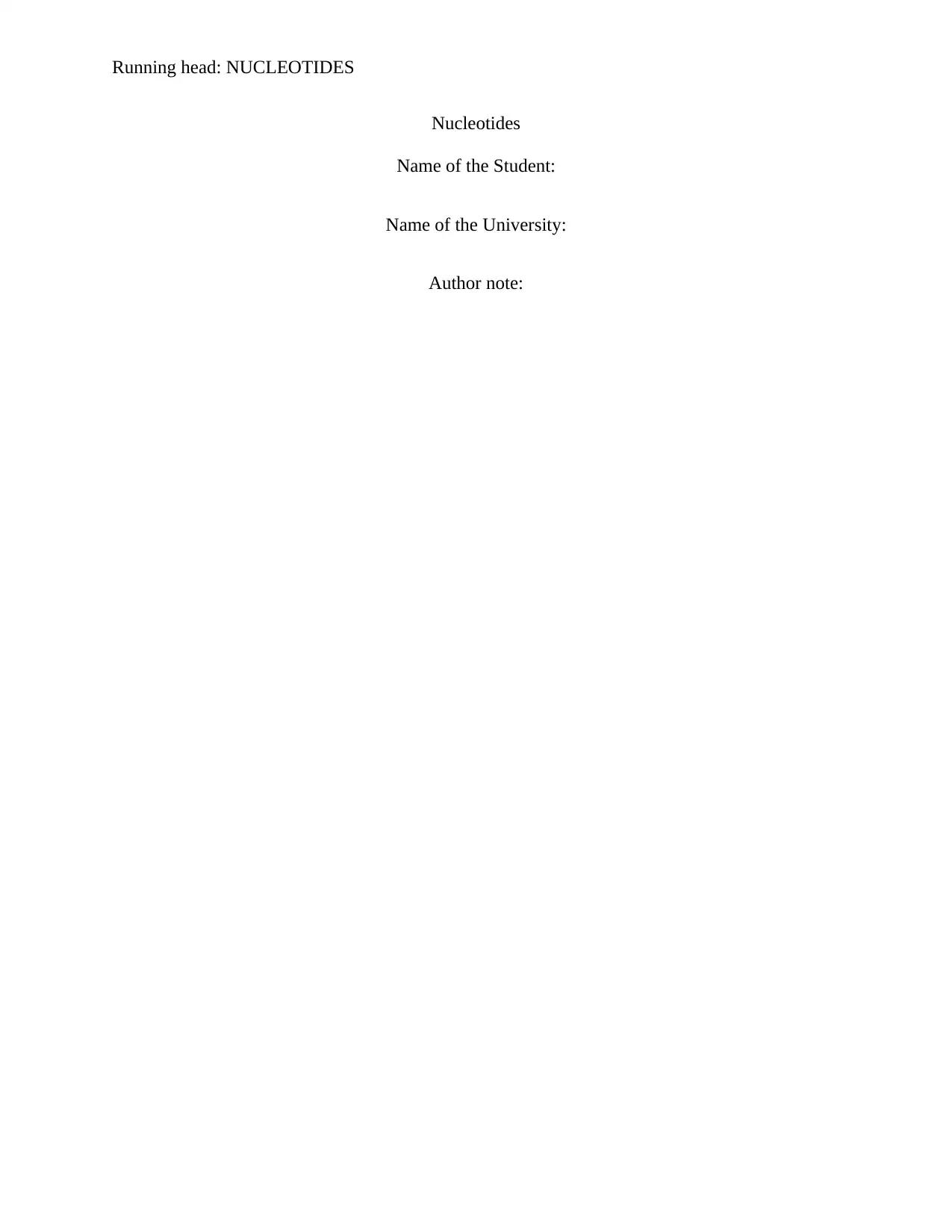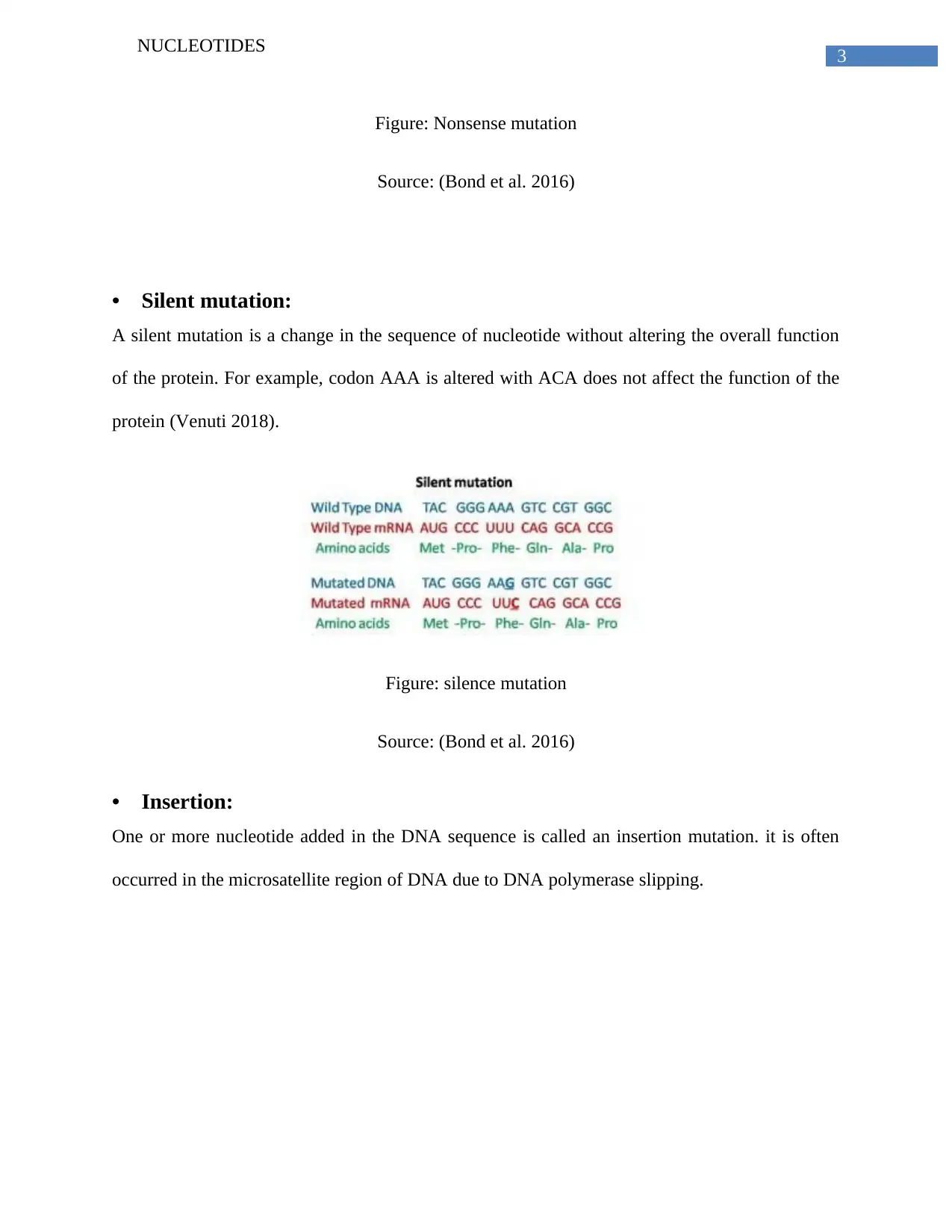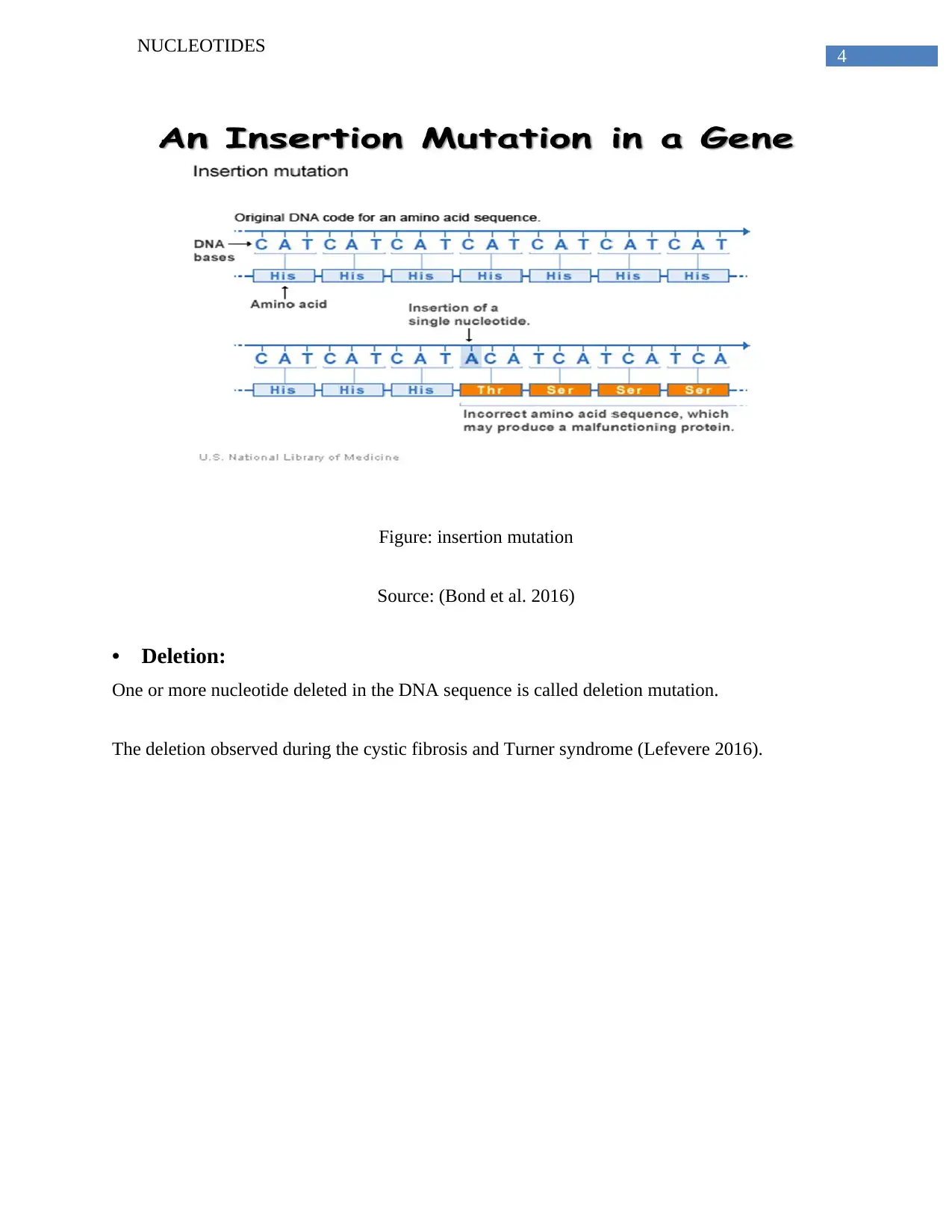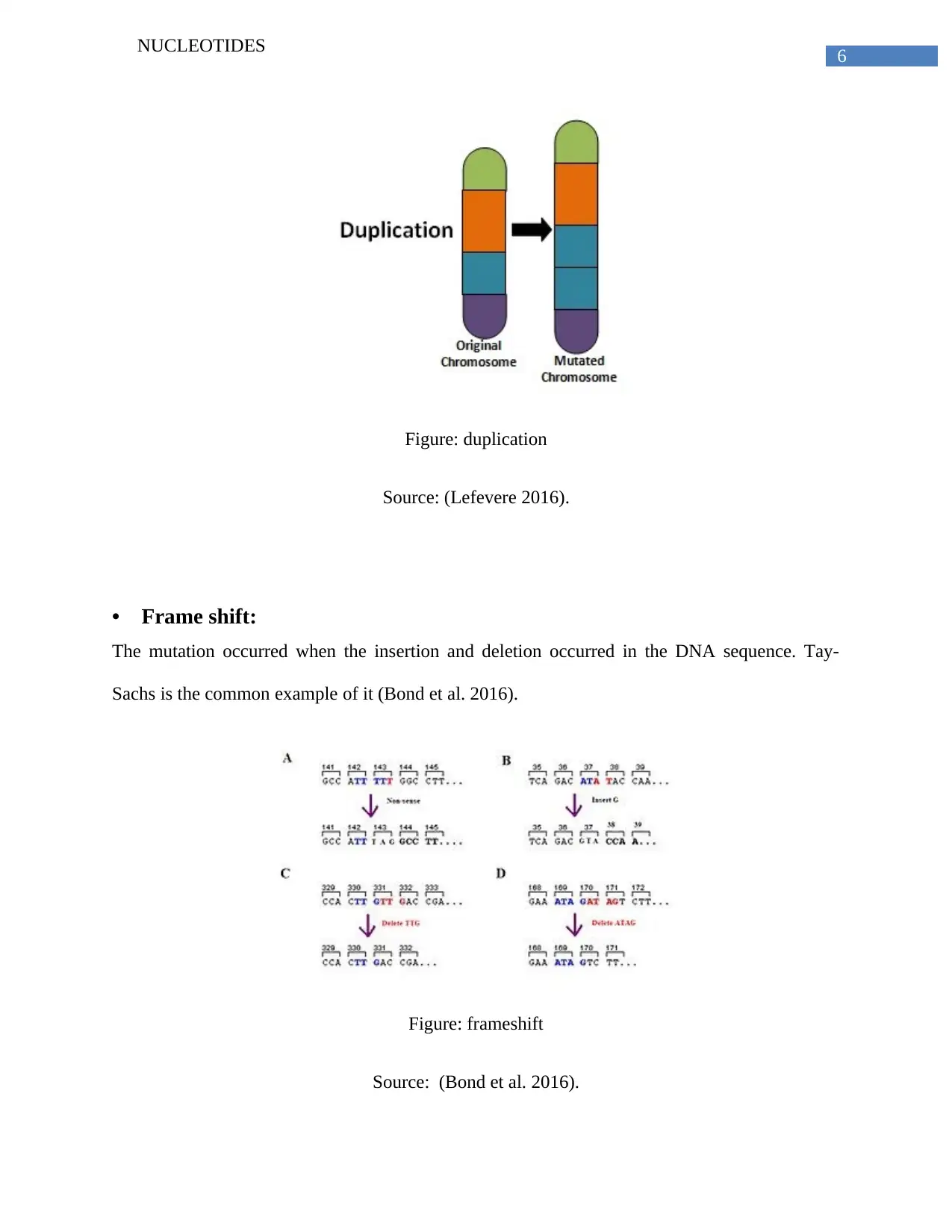BTEC L3 Applied Science: Impact of Errors in Protein Synthesis
VerifiedAdded on 2023/05/31
|9
|689
|437
Report
AI Summary
This report provides a comprehensive analysis of the impact of errors during the stages of protein synthesis, focusing on the functional roles of nucleic acids, specifically DNA and RNA. It explains the structure and function of nucleotides, detailing the processes and enzymes involved in DNA replication and transcription. Various types of mutations, including missense, nonsense, silent, insertion, deletion, duplication, and frameshift mutations, are discussed with examples to illustrate their effects on protein function. The report highlights how errors during mRNA transcription, incorrect splicing of introns, and faulty interactions between amino acids and tRNA can lead to the production of nonfunctional or altered proteins, ultimately impacting cellular processes. This document is available on Desklib, a platform offering a wide range of study resources, including past papers and solved assignments, to support students in their academic endeavors.
1 out of 9
















![[object Object]](/_next/static/media/star-bottom.7253800d.svg)